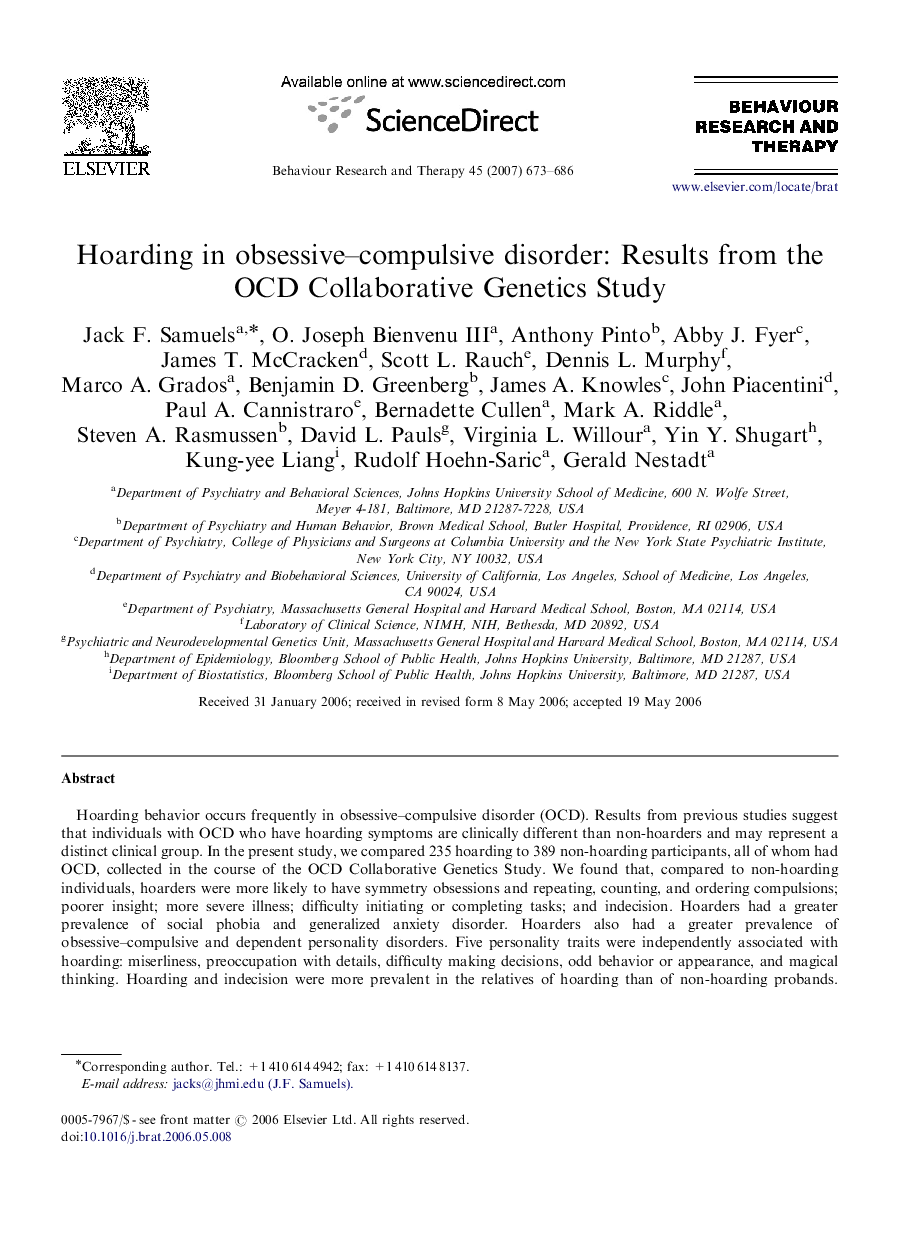| کد مقاله | کد نشریه | سال انتشار | مقاله انگلیسی | نسخه تمام متن |
|---|---|---|---|---|
| 902367 | 916157 | 2007 | 14 صفحه PDF | دانلود رایگان |

Hoarding behavior occurs frequently in obsessive–compulsive disorder (OCD). Results from previous studies suggest that individuals with OCD who have hoarding symptoms are clinically different than non-hoarders and may represent a distinct clinical group. In the present study, we compared 235 hoarding to 389 non-hoarding participants, all of whom had OCD, collected in the course of the OCD Collaborative Genetics Study. We found that, compared to non-hoarding individuals, hoarders were more likely to have symmetry obsessions and repeating, counting, and ordering compulsions; poorer insight; more severe illness; difficulty initiating or completing tasks; and indecision. Hoarders had a greater prevalence of social phobia and generalized anxiety disorder. Hoarders also had a greater prevalence of obsessive–compulsive and dependent personality disorders. Five personality traits were independently associated with hoarding: miserliness, preoccupation with details, difficulty making decisions, odd behavior or appearance, and magical thinking. Hoarding and indecision were more prevalent in the relatives of hoarding than of non-hoarding probands. Hoarding in relatives was associated with indecision in probands, independently of proband hoarding status. The findings suggest that hoarding behavior may help differentiate a distinct clinical subgroup of people with OCD and may aggregate in some OCD families. Indecision may be a risk factor for hoarding in these families.
Journal: Behaviour Research and Therapy - Volume 45, Issue 4, April 2007, Pages 673–686